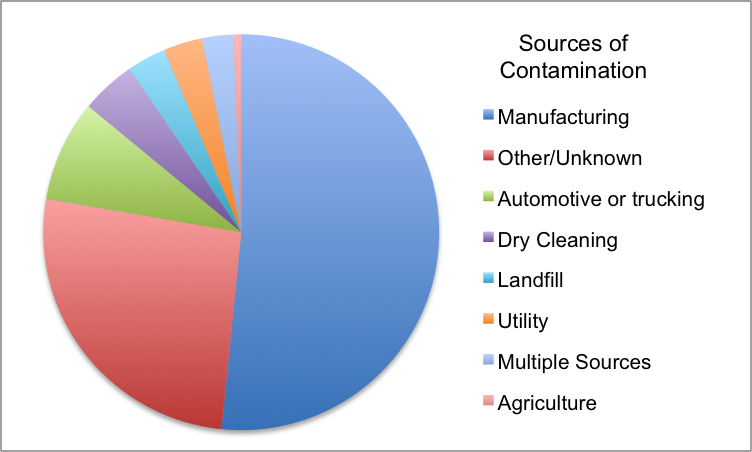Brownfields in North Carolina
A brownfield is a piece of real property whose potential for redevelopment, reuse, or expansion is complicated by the presence, or potential presence, of contaminants or pollutants (US EPA OSWER Office of Brownfields and Land Revitalization, 2009). They are often former industrial sites, service stations, print shops, dry cleaners, or other commercial sites that handle toxic chemicals.
Brownfields sites often have contaminated soil and groundwater. They may also contain physical hazards, such as holes or sharp objects. They are detrimental to surrounding neighborhoods, exposing residents to health risks and depressing property values.
Unfortunately, the contamination on brownfield sites often goes unremediated, and the sites may sit vacant for many years. The owners of contaminated properties often fear legal repercussions and great expenses if the contamination is discovered, so they leave their properties vacant or underused. Developers can be reluctant to buy brownfield sites for the same reasons.
However, allowing brownfields to remain unused is problematic. Vacant properties drive down property values in nearby neighborhoods, attract crime, and pose health risks for people who live and work nearby. In addition, failing to reuse brownfields means that development that could take place on infill sites is instead pushed to the fringes of cities, contributing to sprawl and consuming land that could be used for wildlife habitat or agriculture.
The pie chart below shows the most common sources of contamination for brownfields participating in the North Carolina Brownfields Program.
